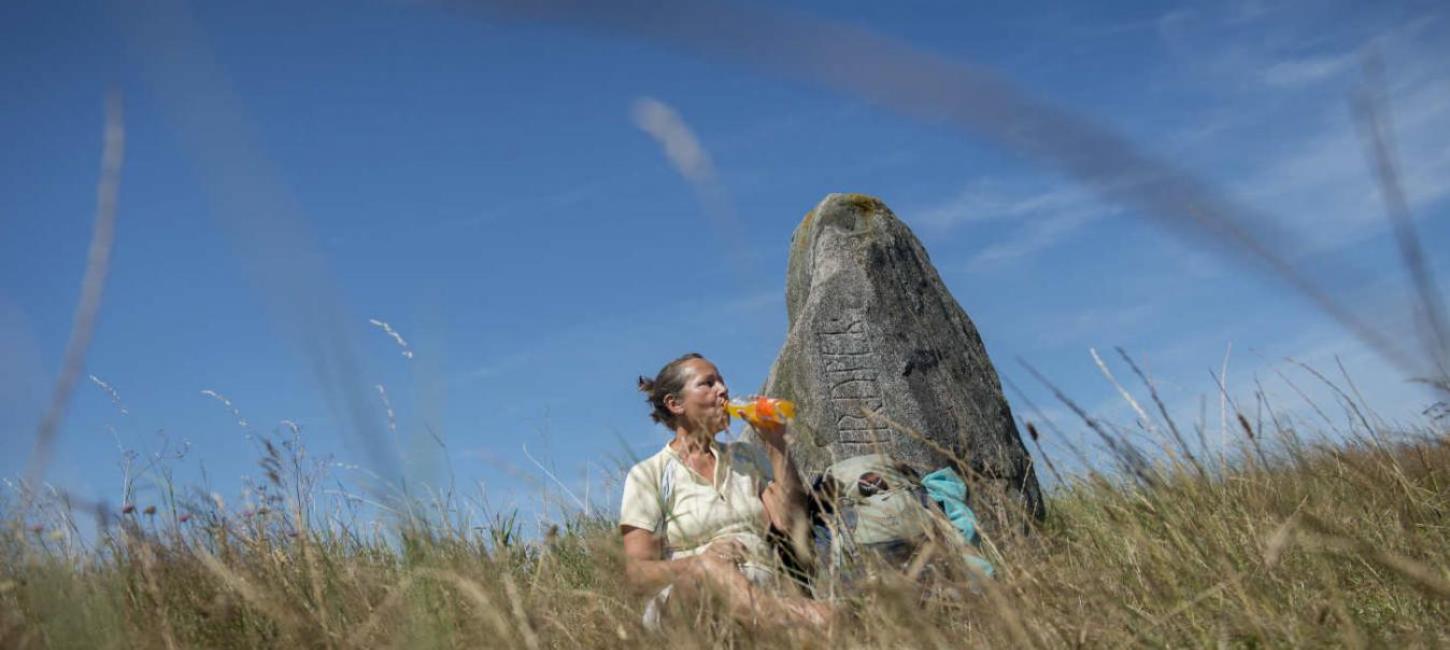
Cycling Stage Vojens - Rødekro (27 km)
There are a number of cultural treasures on the stretch of the Hærvej between Vojens and Rødekro. You will cross the first of the Hærvej’s characteristic bridges, Immervad Bro. On your journey, you can also see the Hærulf Stone.
There are a number of cultural treasures on the stretch of the Hærvej between Vojens and Rødekro. You will cross the first of the Hærvej’s characteristic bridges, Immervad Bro. On your journey, you can also see the Hærulf Stone and a little south of Hovslund Stationsby, there is the old Damgård Mill from 1867.
The grave mounds around Vedsted Lakes
A few kilometers south of the Skrydstrup girl’s grave mound, following the main road between Vojens and Over Jerstal, there is a group of grave mounds slightly west of the road, which are open to the public. The mounds originate from the middle Bronze Age, around 3000 BC. On your return from the grave mounds to the bicycle route, you can see a number of very well preserved graves around the lakes at Vedsted, amongst others one northeast of Vedsted Church.
Fresh provisions can be bought in Vedsted for the journey, or you take the path around Vedsted Lake, where in the southeast end, there is a swimming and recreational area.
The next stage south to Hovlund Stationsby, has a lot of attractions worth stopping and seeing, within a short distance from each other.
The Long Barrows at Holmshus
Holmshus is located not far south of Vedsted, and is home to one of Jutland’s most impressive Stone Age graves, the Long Barrows. They consist amongst others, of two parallel barrows, each over 100 m long. There is access to the large passage grave - remember to bring a torch. Above, the main chamber is covered by a 7 ton solid stone, which must have been an extraordinary construction achievement when it was built around 3200 BC.
The Hærvej route continues along the edge of the peat bog conservation area in Abkær Mose and Stengelmose. Near the main road between the marshes, about 0,5 km west of the bicycle route is a bird watching tower, which has an excellent view over the whole area.
Immervad bro
Afterwards, the journey continues towards the Immervad River, which runs westward, where it runs into Gels River, which in turn becomes Ribe River. You can see the characteristic Immervad Bridge, which was the main crossing point since 1776.
The bridge is built of cut stone, and was presumably originally wooden, although the name Immervad suggests that this was a ford before the bridges were built. Fords and bridges have always been meeting places for travellers, and this is no exception. Immervad Kro, was once well known for its peas and bacon, but has since closed, although the rest stop remains.
Hærulfstenen
Immediately outside Hovslund Stationsby is a remarkable rune stone at the side of the road. The inscription is not long - only the name Hærulf or “Hairulfr” as it was written in the 900’s. The stone was moved to Berlin as spoils of war in 1864 and was first returned in 1952, where it now stands in its original place.
In the same location, slightly east of the road is a Bronze Age mound - Strangelshøj, with a 2 m high standing stone close by. A legend says that the stone turns around when it smells bread! There is access to the mound and stone from the rest stop on the road
Damgaard Mølle
You can stock up on food and drink in Hovlund Stationsby. Around 1 km west of the Hærvej, south of Hovslund Stationsby, is Damgaard Mill, which dates from 1867 and has been beautifully restored. Previously used as a buckwheat mill, the working parts are still intact and it is considered to be the best preserved in Denmark. There is access to the mill from the main road under the railway, or via Hovslund Stationsby (Open 1st April - 1st November 10-17).
Vendersvold
Further along, the route passes through Øster Løgum, where a few kilometers south of which is a fortification dating back to the late 200’s, the Vendersvold. The site was originally around 3 km long, of which 500 m can still be seen today. From the Hærvej, there is access from the rest stop on Andholmvej. 1700 years after the fortification was finished, a second defensive system was built on the same site. On the western side, there is a well preserved cannon battery, the Andholm battery.
Rødekro
The Hærvej goes straight past the old inn in Rødekro and on through the main road in the town. Normally inns are named after the town where they are located, but Rødekro is an exception as the town inherited its name from the inn in 1642. There are good shopping facilities in Rødekro.
Slightly south of Rødekro near Rise Church is a way marker from the time of Christian VII, with the inscription “Weg nach Flensburg und Sleswich”. The romantic period church with distinctive wall studs in the tower, contains well preserved inventory from the Middle Ages.
TO THE NEXT STAGE: RØDEKRO - KLIPLEV